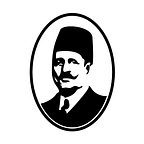Holy Cross Chapel
An unexpected icon, this church brings Armenian-Iranians together
Architect ………………….. Rostom Voskanian
Year ………………………………………. 1987
‘Rostom Voskanian did something that had never been done before — he built a church made out of concrete,’ says Ara Satoorian, one of the longest-standing members of the Armenian Cultural Ararat Organisation, a sports complex in north Tehran’s Vanak neighbourhood. To Satoorian, the Holy Cross Chapel, built in 1987 on the southeastern edge of the complex, is the Armenian-Iranian architect’s lasting contribution to his community in the city.
Though tiny in comparison to other chapels found in Iran, the building has a striking presence physicality and is as avant-garde today as it was 30 years ago. ‘Armenian churches tend to follow a specific and instantly recognisable architecture, but the building is completely new and revolutionary,’ says Satoorian. Though the design of the chapel does reference medieval Armenian churches, with its symmetrical layout, Voskanian’s daring use of concrete to create block-like crosses was so jarring that the Armenian clergy was at first reluctant to ordain it.
‘He had a vision of a chapel that reflected a Tehrani Armenian identity and in the end they finally accepted it,’ says Satoorian of the design, which took inspiration from local architecture, particularly the flat rooftops of Tehran’s homes. ‘Voskanian is a source of great pride for us — he was a great artist and an even greater visionary in the modernist spirit. Following his death several years ago, his brother, who lives in Armenia, helped create a small museum in Yerevan as a testament to his legacy, with funding from the Armenian School Foundation in California. We want young people to be aware of who he was and what he did.’
The building remains a favourite among enthusiasts of modernist architecture, but Ararat is also popular among football fans who come to watch Armenian-Iranian FC Ararat Tehran play in the 10,000-seat stadium Voskanian built in 1971, which is adjacent to the chapel.
‘Iranians are obsessed with football and Armenians are no different from everyone else,’ says Arbi Zohrabian, the director of FC Ararat Tehran’s administration. ‘It doesn’t matter if they are playing well or not, if you are Armenian, this is the team you support. If you don’t support them, it’s like going against your family.’
Established in 1944 and stretching over a 74,000 square metre area, Ararat has indoor basketball courts, billiard tables and tennis and football fields. There are also two large pools, badminton courts, ping pong tables and even a rock climbing facility. It serves as a museum of sorts, with old black and white photos and memorabilia showing Armenians playing sports decades ago.
‘You almost feel like you’re outside Tehran here,’ says Teni Tarverdian, a 32-year-old member of Ararat. Connections to the homeland are everywhere within this self-contained space: signs appear in Armenian script, Armenian coffee is served, traditional music plays and Farsi is rarely spoken. The sports complex takes its name from Mount Ararat, a place of biblical and mythological importance, believed to be where Noah’s Ark landed following the flood — a fitting moniker for a space that connects the community to its roots.
‘Armenians have a connection to Vanak dating all the way back to the 17th century,’ says Satoorian of the suburban treelined neighbourhood, a 30-minute taxi ride from downtown Tehran. But if you’re looking for a sign to welcome you to ‘Little Armenia’, you won’t find it. Unlike in Isfahan’s Julfa quarter or Beirut’s Bourj Hammoud, Armenians in Vanak have a somewhat subtle presence.
Vanak’s Armenian community, as in Tehran’s other Armenian neighbourhoods, also indulge in an unexpected delicacy: pizza. ‘Armenian-owned restaurants in Tehran have a reputation for having the best pizza in town,’ says Edwin Mirikian, the charismatic co-owner of the popular restaurant Narly located just around the corner from Ararat. Narly’s menu is made up of entirely Italian cuisine, but despite the lack of visual references everyone who eats here knows that the restaurant is Armenian. ‘It’s a Tehrani thing. If you’re in this area of Vanak, you just know.’
Mirikian has been an active member of Ararat for as long as he can remember. ‘Vanak is a very calm area but you always feel there’s something happening in Ararat.’ The complex is a cultural enclave where the community celebrates its unique identity and religion, and Armenians of all stripes gravitate towards it. ‘This is an important place for us to preserve our sense of pride and meet other people who are like us,’ says Tarverdian. ‘If you’re Armenian and live in Tehran, you’ve visited this place at least once in your life. Everyone comes here at one point or another, whether it’s for a wedding or to watch a play.’
Celebrations tie the Armenian community together — a key reason why they’ve preserved their distinct identity despite more than 400 years in Iran. It’s the Holy Cross Chapel that’s usually the centre of these festivities, including the annual evening programme to mark the independence of the Armenian Republic. With soft yellow lights illuminating the grounds of the building, a group of women in aprons and waist-length headscarves perform a choreographed dance and the Ararat choir sings into the night. It’s an interesting sight against the backdrop of the Holy Cross Chapel, which, with its strikingly modern design, has become a marker of Armenian identity in Tehran.
Published in the issue 62 — The Brutalist Architecture Issue of Brownbook Magazine
